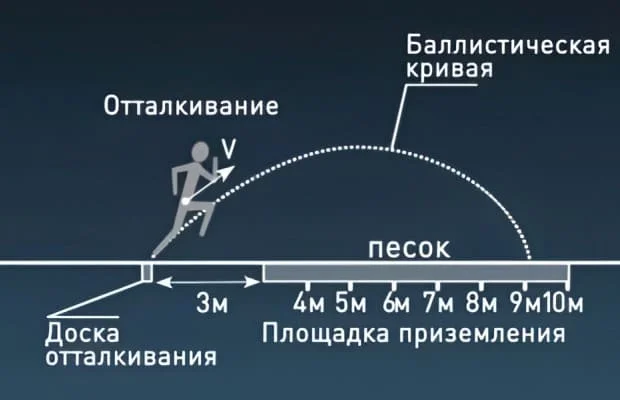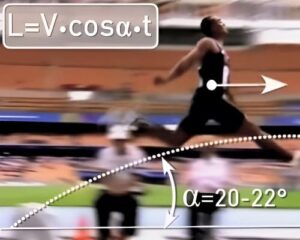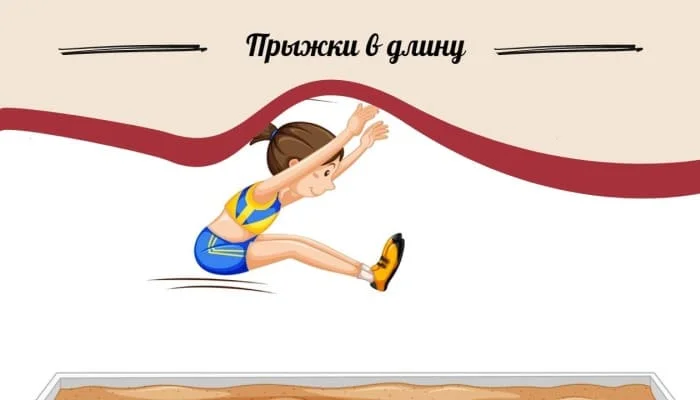In the article “Long jump” we will talk about the athletic discipline, which was popular in ancient times, and talk about the features.
#LongJump #Jumping #Athletics #SummerSports
Long jump competitions are first mentioned in Homer’s Odyssey and the myth of the Argonauts. It is known that ancient Olympic champions also competed in jumps. Technique of ancient jumping differed significantly from modern types, acceleration was short, and in the hands of athletes were holding a variety of weights up to 4.5 kg. Jumping was also part of the pentathlon, an ancient pentathlon.
In the Middle Ages, athletic competitions receded into the background, giving way to jousting tournaments. The new development of athletics, like other sports, occurred in the 2nd half of the 19th century, as the technique was improved and new jumps began to appear. In addition to conventional jumps, athletes mastered the triple long jump, high jump and pole vault.
In 1896, at the first Olympic tournament in Athens, the first set of medals was played, the winner was the American athlete Ellery Clark with a score of 6.35 meters.
Over the past century, the technique of jumping has been continuously improved and, of course, the results have improved. The last record in the jump was set by the outstanding Mike Powell. His result of 8 meters and 95 centimeters has not even been repeated so far.
By the way, the ancient jumpers were sure that the additional weight made it possible to jump much farther, but they were wrong. Nowadays the rules are fundamentally different. In official competitions, each athlete makes three attempts, and the leaders of the competition another three extra attempts.

In order to perform a successful jump, the athlete must complete four stages. The first stage begins with a run-up on the track, the second stage is pushing off with one foot from the board, the third stage is flight, and the fourth stage is landing in a sand pit. The length of the jump is calculated from the push-off line to the beginning of the depression in the sand when landing.
If the athlete’s footprint crosses the line of push-off, the jump will not count. In addition, if during the record jump in the back of the athlete blows tailwind with a speed of more than 2 m / s, then the established record is not counted, but the result of the jump goes into the competition.
In the history of the sport there is a curious fact. For a long time records set on alpine stadiums were counted separately from records set on the plain. Why?
After the phenomenal result of Bob Beamon in Mexico City in 1968, when he set the world record with 8.90 meters, many specialists had the feeling that the high altitude gives the jumper an advantage over the athlete who starts on the plain. This impression was reinforced by the fact that the previous record of Igor Ter-Ovanesyan (USSR) was also set in the highlands.

Therefore, an unofficial decision was made to keep two world record tables, one for plain stadiums and one for high mountains. Proponents of the high altitude theory had two powerful arguments that rely on the laws of physics.
The force of gravity gradually decreases with distance from the surface of the earth, this derives from the universal law of gravitation. Of course, at the height of Mexico City, which is no more than 2 km, the decrease in gravity is negligible. But on the other hand, for the jump to be only a few centimeters longer, no greater decrease in gravity is needed.
This theory turned out to be so convincing that no one could think of challenging it or checking it with figures in their hands. The thunder sounded in 1991, when Mike Powell surpassed Beamon’s record in the stadium in Tokyo, i.e. on the plain. So since 1991, jumpers have had only one record table, both for the plains and for the highlands.
After Powell’s record, physicists decided to calculate the effect of high altitude conditions on the performance of athletes. It turned out that the combined effect of thin air and reduced gravity can change the result of the jump by no more than 2 mm. If the heads of sports federations had appealed to scientists earlier, the double record tables would not have appeared at all.
Science provides an answer to another unexpected question that young jumpers often ask themselves. Who will jump farther, the small and light jumper or the large and heavy jumper? The answer seems obvious, the lighter jumper will show the better result, and this answer is completely wrong.
In fact, the laws of physics state that all jumpers are on an equal footing. To scientists, a jumper in flight, is an ordinary physical body and it, like all other bodies, whether it is a thrown rock or a discharged artillery shell, is subject to the same laws of ballistics. The jumper during the jump also flies on a ballistic curve.

The forward and upward movements of the athlete are due to the energy accumulated during the run-up and push-off, but the downward movement is due to the attraction of the ground, i.e., the acceleration of free fall, which is the same for everyone.
Thus, the jump distance depends on only two starting parameters:
- The velocity the jumper has gained by the time he jumps;
- The angle at which he pushed himself into the air.
And nothing else.

Modern physics allows you to calculate the optimum angle of departure for the jump. It lies between 20 and 22 degrees from the horizontal. We think that now it is clear why the ancient athletes were mistaken in the fact that jumping with a weighted weight allowed to show the best results.
This is what a huge role science can play in sports. It would be a slight exaggeration to say that the physicists who developed the theory of ballistics should be on the podium with the athletes. Thanks to them and the brilliant coaches the results of modern jumpers are very close to the threshold of 9 meters.
Jumping is a technical discipline in athletics. This sport is popular among adults and children. It develops willpower, leg and girdle muscles, coordination. Athletes are fast, agile, hardy people with excellent reactions.
Most disciplines of athletics require little or no sophisticated equipment. A T-shirt, athletic shorts, and special spiked sneakers are all that is needed.
Children’s and youth athletics sections are available in almost any city or district center, and practically everyone can participate in them. Athletics is not limited to jumps, it includes running, walking, throwing sports, cross-country, so everyone can choose their direction, their way to victory.
Long jump from a run
FAQs
What is the long jump?
The long jump is a group of athletic disciplines in which an athlete must push off to the maximum horizontal length using leg power. At the Olympic Games, the long jump is presented in four sports: the long jump, the triple jump, the heptathlon and the decathlon.
Why isn't jumping from a place in the Olympics?
Jumping from a place was in the program of the Olympic Games for 12 years (from 1900 to 1912). The list of disciplines in the Olympics is formed on the basis of global popularity among young people, attractiveness to advertisers and spectacularity. Seat jumps quickly lost their popularity, but are used by athletes as a physical exercise.
What is the world record for the long jump?
The world record in the long jump for men - 8.95 meters belongs to Mike Powell (USA), for women - 7.52 meters Galina Chistyakova (USSR). In the men's triple jump, Jonathan Edwards (Great Britain) had 18.29 meters, women Yulimara Rojas (Venezuela) 15.67 meters. On the vault - 3.73 meters Byron Jones (USA).









